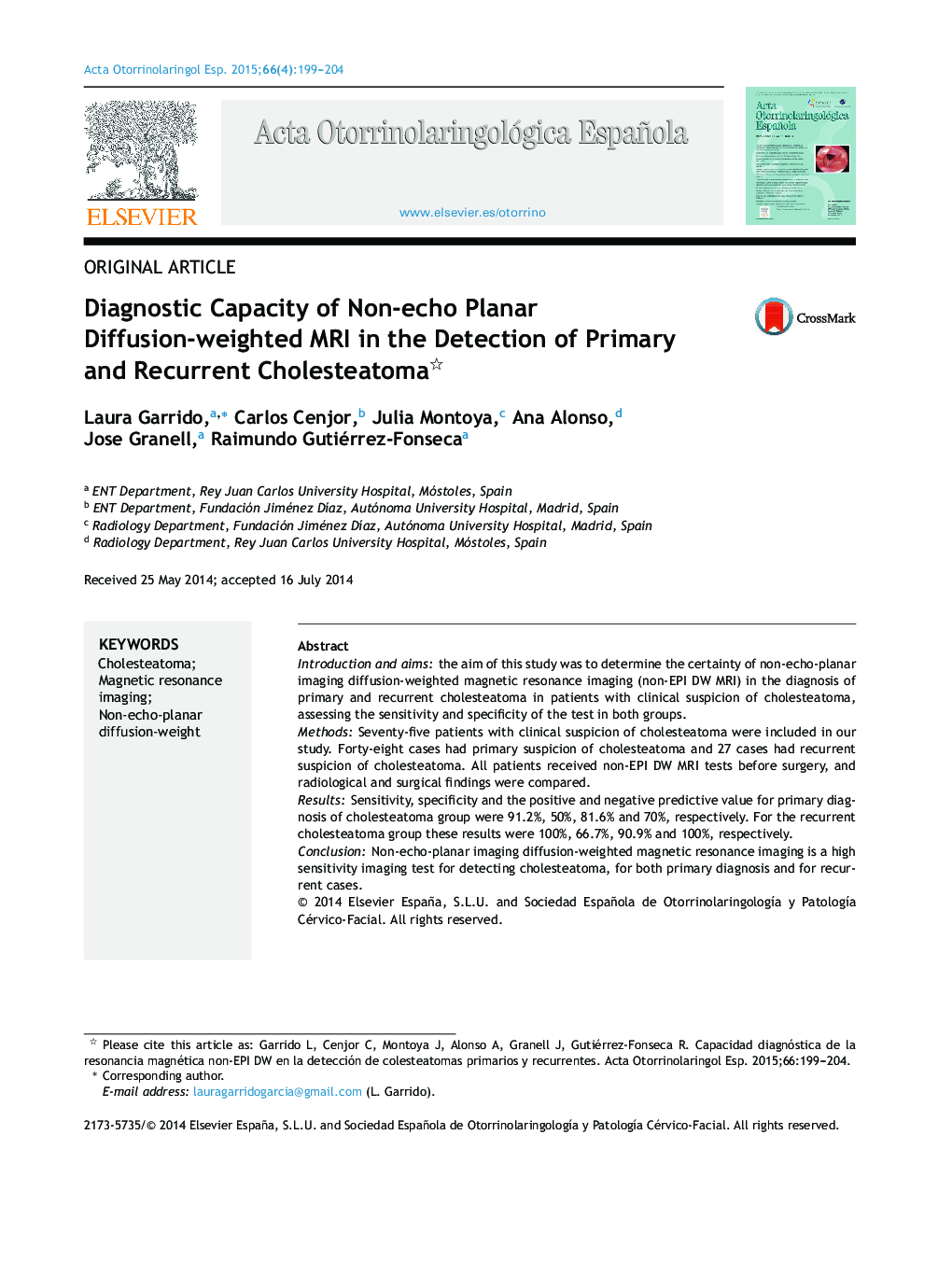| Article ID | Journal | Published Year | Pages | File Type |
|---|---|---|---|---|
| 4100580 | Acta Otorrinolaringologica (English Edition) | 2015 | 6 Pages |
Introduction and aimsthe aim of this study was to determine the certainty of non-echo-planar imaging diffusion-weighted magnetic resonance imaging (non-EPI DW MRI) in the diagnosis of primary and recurrent cholesteatoma in patients with clinical suspicion of cholesteatoma, assessing the sensitivity and specificity of the test in both groups.MethodsSeventy-five patients with clinical suspicion of cholesteatoma were included in our study. Forty-eight cases had primary suspicion of cholesteatoma and 27 cases had recurrent suspicion of cholesteatoma. All patients received non-EPI DW MRI tests before surgery, and radiological and surgical findings were compared.ResultsSensitivity, specificity and the positive and negative predictive value for primary diagnosis of cholesteatoma group were 91.2%, 50%, 81.6% and 70%, respectively. For the recurrent cholesteatoma group these results were 100%, 66.7%, 90.9% and 100%, respectively.ConclusionNon-echo-planar imaging diffusion-weighted magnetic resonance imaging is a high sensitivity imaging test for detecting cholesteatoma, for both primary diagnosis and for recurrent cases.
ResumenIntroducción y objetivosEl objetivo de este estudio es determinar la fiabilidad de la resonancia magnética con técnica de difusión no eco-planar en el diagnóstico de pacientes con sospecha clínica de colesteatoma primario y recurrente, evaluando la sensibilidad y especificidad de la prueba en ambos grupos.Métodos75 pacientes con sospecha clínica de colesteatoma fueron incluidos en el estudio. 48 pacientes presentaban sospecha clínica de colesteatoma primario y 27 pacientes presentaban sospecha clínica de colesteatoma recurrente. En todos los pacientes se realizó una resonancia magnética con técnica de difusión no eco-planar previa a la cirugía, y se compararon los resultados radiológicos con los resultados quirúrgicos obtenidos.ResultadosLa sensibilidad, especificidad, valor predictivo positivo y negativo en el grupo de colesteatoma primario fue del 91,2%, 50%, 81,6% y 70% respectivamente y en el grupo de colesteatoma recurrente fue del 100%, 66,7%, 90,9% y 100%, respectivamente.ConclusiónLa RM con técnica de difusión no eco-planar es una prueba altamente sensible en el diagnóstico del colesteatoma tanto en pacientes con colesteatoma primario como en recurrencias.
